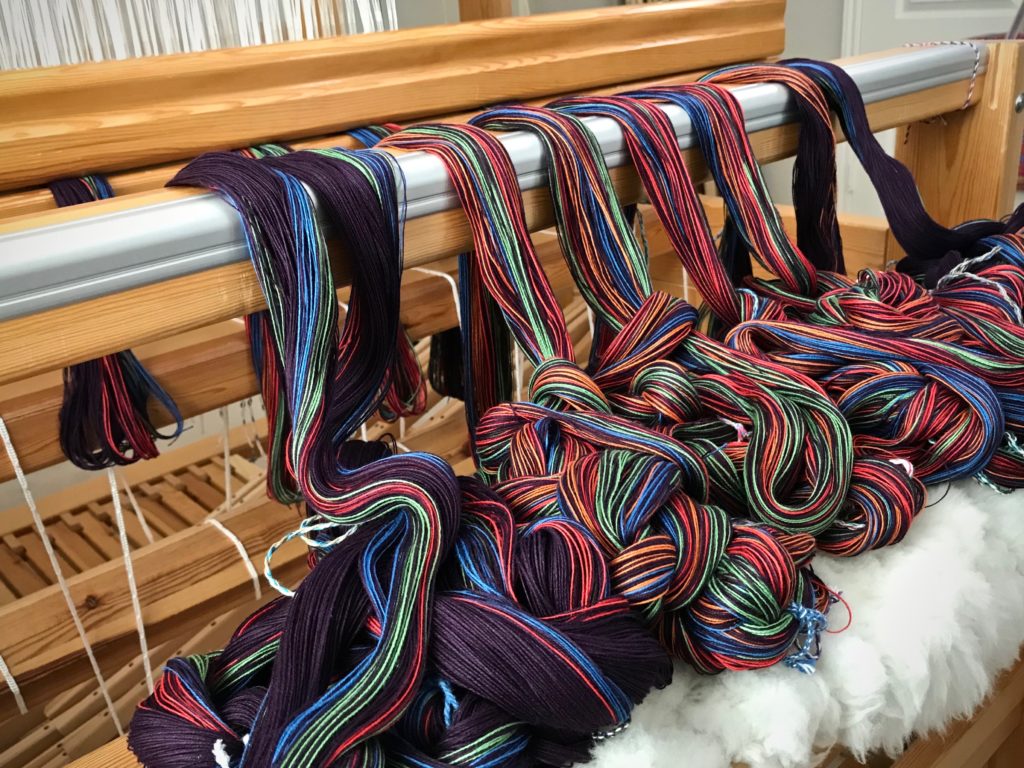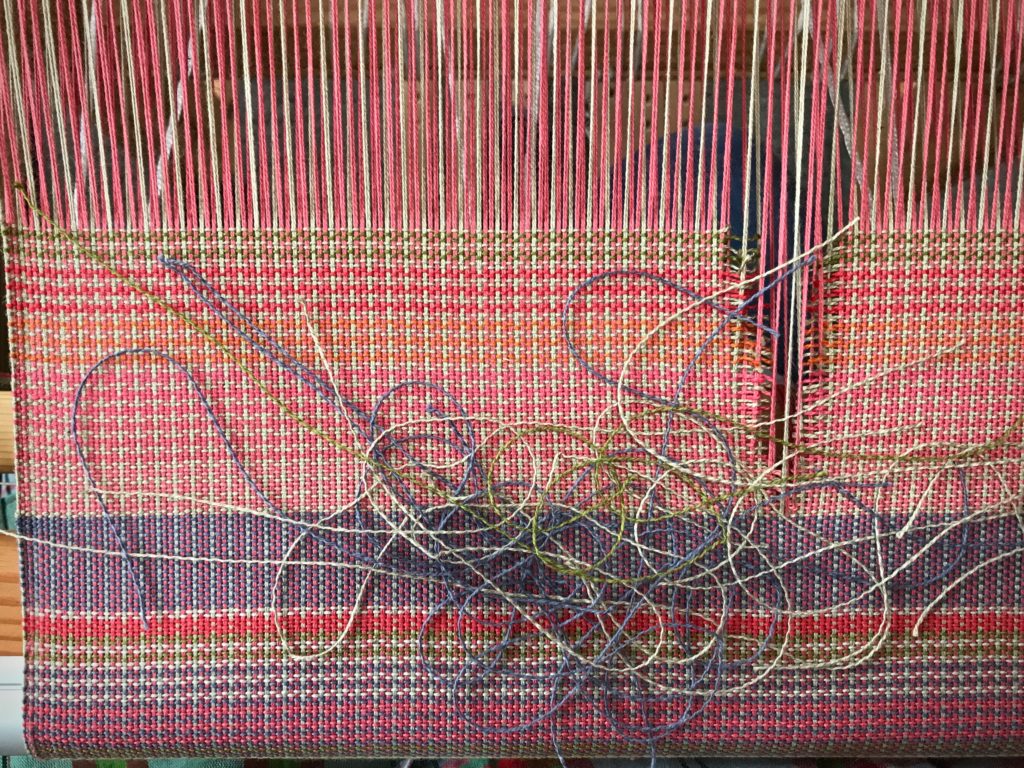This week I crossed something off my Weaving Bucket List: Use handwoven fabric to upholster chairs. Remember the color-and-weave linen fabric? It’s part of my collection of fabrics designed specifically for our Texas hill country home. I covered four barstool seats with this linen upholstery fabric!
Weaving the fabric is the easy part. But I’m a newbie at upholstering. As such, using my “precious” handwoven cloth is unnerving. But I was fortunate enough to receive terrific advice and encouragement from friends, including one who conferred on my behalf with professional upholsterers she knows. And another friend generously loaned her power staple gun to me. I also referred to a book (Matthew Haly’s Book of Upholstery, by Matthew Haly) that I picked up a few years ago in hopes that I might someday reach this item on my bucket list.
I count this as practice and a first step of experience. Eventually, I may work up the courage to reupholster our eight dining room chairs. Hmm… the thought of getting to design the fabric makes that challenge rather appealing.
May you cross something off your bucket list.
Your amateur upholsterer,
Karen




































